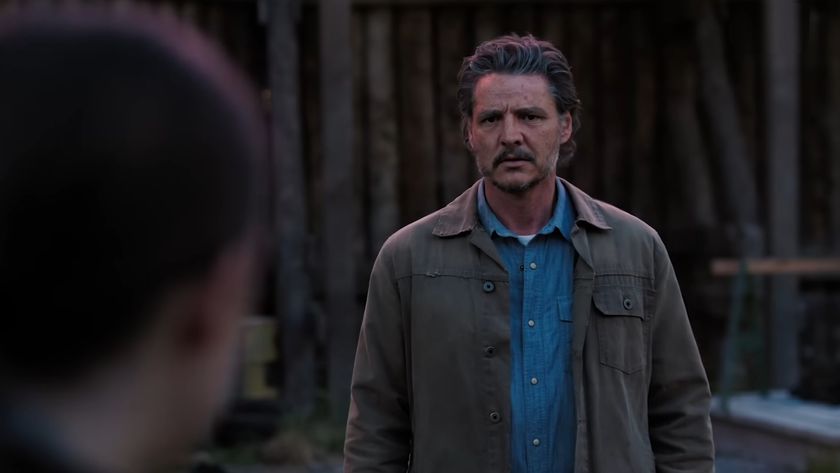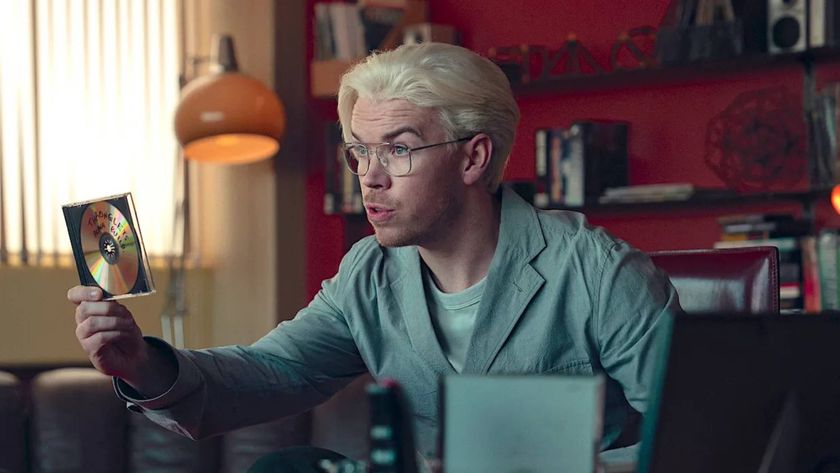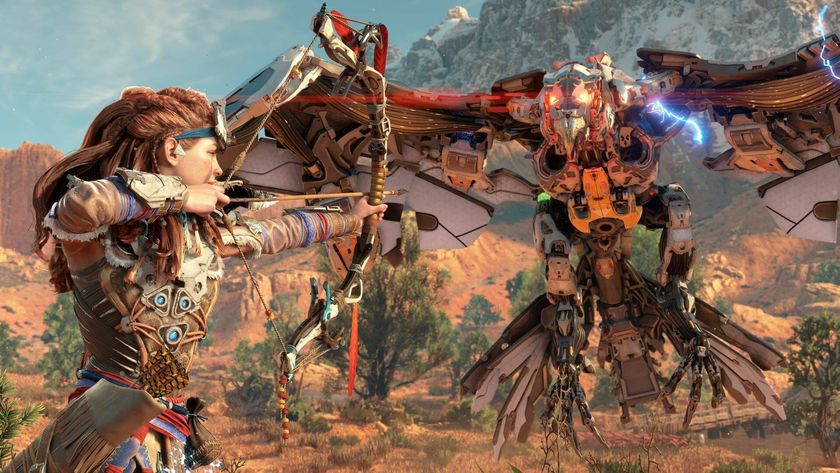New author Peter Higgins talks to Stephen Jewell about his impressive debut novel for Gollancz this month

After a hotly fought auction, Gollancz recently snapped up a debut spy thriller set in an alternative Russia. In fact Gollancz acquired world rights in three novels by new author Peter Higgins, the first of which is Wolfhound Century , where Inspector Vissarion Lom hunts a terrorist in a grim Stalinist state. Deputy Publishing Director of Gollancz, Simon Spanton, announced, "What makes this setting sing is Peter's ability (simply extraordinary in a debut author) to weave a gripping story around people you come to know so well. They move through a world that is terrifying in both familiar and bizarre ways but they feel what we feel." So we had to speak to this chap to find out more...

SFX : Wolfhound Century is your first novel. Was it a long and difficult road to get to where you are now?
Peter Higgins: I started writing seriously with short stories, which is how I learned the basics. When my stories started getting published, and some of them were pretty well received, I decided it was time to have a go at a novel. I wanted to write something that built a large, vivid world, with characters that grew and developed, and that would also work as a tense thriller, an investigation and a race against time. Only a novel could make the space to do all that.
SFX : So are you happy with the reception so far?
PH: It's been great. There's been a very positive response from science fiction and fantasy readers, and it's also being liked by people who maybe wouldn't read a whole lot of science fiction as such but are interested in a strong classic thriller plot, or the ideas about early 20th century history, art and literature that are swimming around beneath the surface. Some of the reviews have barely noticed that it's science fiction at all, which for me is fantastic, because I'm a bit of a cross-genre evangelist. What I wanted to do, above all, was write something that would simply work as a story.
SFX : Wolfhound Century is set in an alternate Russia. How did you come to create the novel's setting?
PH: When I was growing up, the Cold War was on and Russia was everywhere, so it was like an unavoidable presence, a familiar, inaccessible, dangerous mirror-country of myth and dark extraordinary history. It wasn't only the threat of Russia the nuclear enemy and the omnipresence of espionage stories: it was also that Russian authors from Dostoevsky to Solzhenitsyn were prominent in every bookshop, Soviet dissidents were interviewed in the papers, we studied the 1917 revolution in school, socialism and communism were still debated as credible options and War And Peace and Doctor Zhivago were on television. But nobody I knew ever went to the Soviet Union and we never met anyone from there. Russia was like elsewhere, beyond the border.
SFX : How did all that come together in Wolfhound Century ?
PH: When I started working on it, I was aiming above all to write the story of the characters: the decent policeman who's beginning to realise he's working for an indecent state; the woman who works in a factory and wants to change the world; the master terrorist with global ambition who hears an alien voice in his head. For that story to really work, their world needed to feel like a huge, oppressive totalitarian state and it needed to feel real, so that what happened to them actually mattered. At first, I thought about inventing a world like that from scratch, but it felt flimsy and unconvincing. On the other hand, I was uneasy about going head-on into a full re-creation of historical revolutionary Russia because the science fiction elements – the giants, the alien monstrosity that's fallen out of the sky, the dangerous sentient rain – also needed to feel real and not bolted on but fully part of the world and accepted by the characters as part of their normality. So I ended up taking Russia as a source, a starting point, and building a world that was like it but also different: a world which feels in many ways Russian, in which twisted and refracted Russian-ness lurks more or less close to the surface, but the word "Russia" isn't used anywhere. It's a WYSIWYG world: you don't need to know Russian history to read it, though the echoes are there, if you want to look for them.
SFX : You've got quotes on your book cover from Peter F Hamilton, Hannu Rajaniemi and Richard Morgan and you've been compared to China Miéville! Do you consider Wolfhound Century to be a hybrid of such SF and urban fantasy and is that where the mysterious ancient forest comes in?
PH: I'm so glad you asked me about the forest! The world of Wolfhound Century is bordered by an endless, dark forest and although very little of the actual action takes place there, but it's a big presence in the book as rivers flow out of it, the rain that falls on the continent sometimes smells of it, strange emissaries and garbled messages emerge from it, and some of the weirder creatures that walk the city have their origins there. There's a sense in which the city itself has shallow foundations, that it's displaced a much older and less human-centric world. The old giants and wolves and rusalkas are still there, uneasily, in the margins. You put the question in genre terms, which is really interesting. I guess what's happening with the forest in Wolfhound Century is that, although the world-building owes a lot to urban fantasy and science fiction, other pre-urban sources are also leaking in. I'm a huge fan of Robert Holdstock, for example, and there are memories of Fangorn and Mirkwood and the ents. The whole idea of being lost in the forest, and the terrible giants and witches and ogres that live there, is central to fantasy at its most basic level. More specifically, that whole dark foresty mind-space has roots in Slavic and Scandinavian and central European folklore, and as such it's part of the Wolfhound Century world.
Sign up to the SFX Newsletter
Get sneak previews, exclusive competitions and details of special events each month!
SFX : With the character of Investigator Vissarion Lom, the novel also takes the form of a crime book. Have you also been influenced by contemporary crime novels that have been set in Russia such as Gorky Park or more recently AD Miller's Snowdrops ?
PH: It's more than simply an influence. I'm a thriller fan, a thriller nerd! Snowdrops came out after Wolfhound Century was already written, but Gorky Park was a big presence in my mind when I was writing. So were "Hitler wins" books like Robert Harris's Fatherland and Len Deighton's SS-GB . More generally, I was conscious of the tradition of The Riddle Of The Sands , Rogue Male and writers like John Buchan, Eric Ambler, Graham Greene, and early John le Carré as well as later works like David Morrell's First Blood and Philip Kerr's Bernie Gunther books, and Dan Brown too. For me there's a pure reading pleasure in another version of classic scenes like the official coming down the train checking ID papers, or the detective's visit to the mortuary, trying to read the clues in the body of the dead. Wolfhound Century is a full-on thriller in a science fiction fantasy world.
SFX : The "Wolfhound Century" itself is mentioned in a quote at the front of the book. What does it relate to and where did you get the inspiration for the title?
PH: It's from Osip Mandelstam, a Russian who started off writing dense, beautiful, intimately personal lyrical poetry, and ended up dying in Stalin's gulags: "The wolfhound century is on my back/But I am not a wolf." For me, those lines crystallise something about the way people who are sensitive and open to life in all its richness and humanity can be crushed and distorted by the terrible cruelties that history piles on them. One of the common threads of totalitarian regimes – Hitler, Stalin and the rest – is that they will not allow personal space. People cannot have private lives. They cannot have interior worlds. They can't simply close the door and be themselves. That's what I hear in those Mandelstam lines: "The forces of history are hunting me down/But I just want to be me."
SFX : You've included a lot of early 20th Century art on your website to illustrate the character profiles for example. Do you like that contrast between classic futurism and near future sci-fi as such?
PH: Absolutely. It seems to me that science fiction owes a huge amount to the assault on conventional realism mounted by modernist art and literature in the early twentieth century. It's more than just styling. It's the whole idea that new forms of technology and new social/political systems change the way we inhabit the world, change what it means to be human. There's a fair bit of art and music and cinema in Wolfhound Century : dissonant modernism, crude social realism, super-civilized nostalgia, propaganda... It's part of the world building, another dimension for the struggle between individuals and the regime.
SFX : Is this a one-off story or can we expect to see more of Vissarion Lom and friends in the future?
PH: Wolfhound Century is the opener of a trilogy: it's an extended story arc played out over three parts. The second book will be out early in 2014.
SFX : Thanks Peter!
You can read the first few chapters of Wolfhound Century over at the Gollancz blog or read more about Peter Higgins at his website . The book is available to order at Amazon.co.uk .
SFX Magazine is the world's number one sci-fi, fantasy, and horror magazine published by Future PLC. Established in 1995, SFX Magazine prides itself on writing for its fans, welcoming geeks, collectors, and aficionados into its readership for over 25 years. Covering films, TV shows, books, comics, games, merch, and more, SFX Magazine is published every month. If you love it, chances are we do too and you'll find it in SFX.

The Last of Us HBO showrunner says "flat out" that "I am not going to go past the game" like Game of Thrones did with George R.R. Martin's novels

New Black Mirror season 7 trailer reveals how Will Poulter's Bandersnatch character returns to the Netflix show - with a Sonic the Hedgehog namedrop











